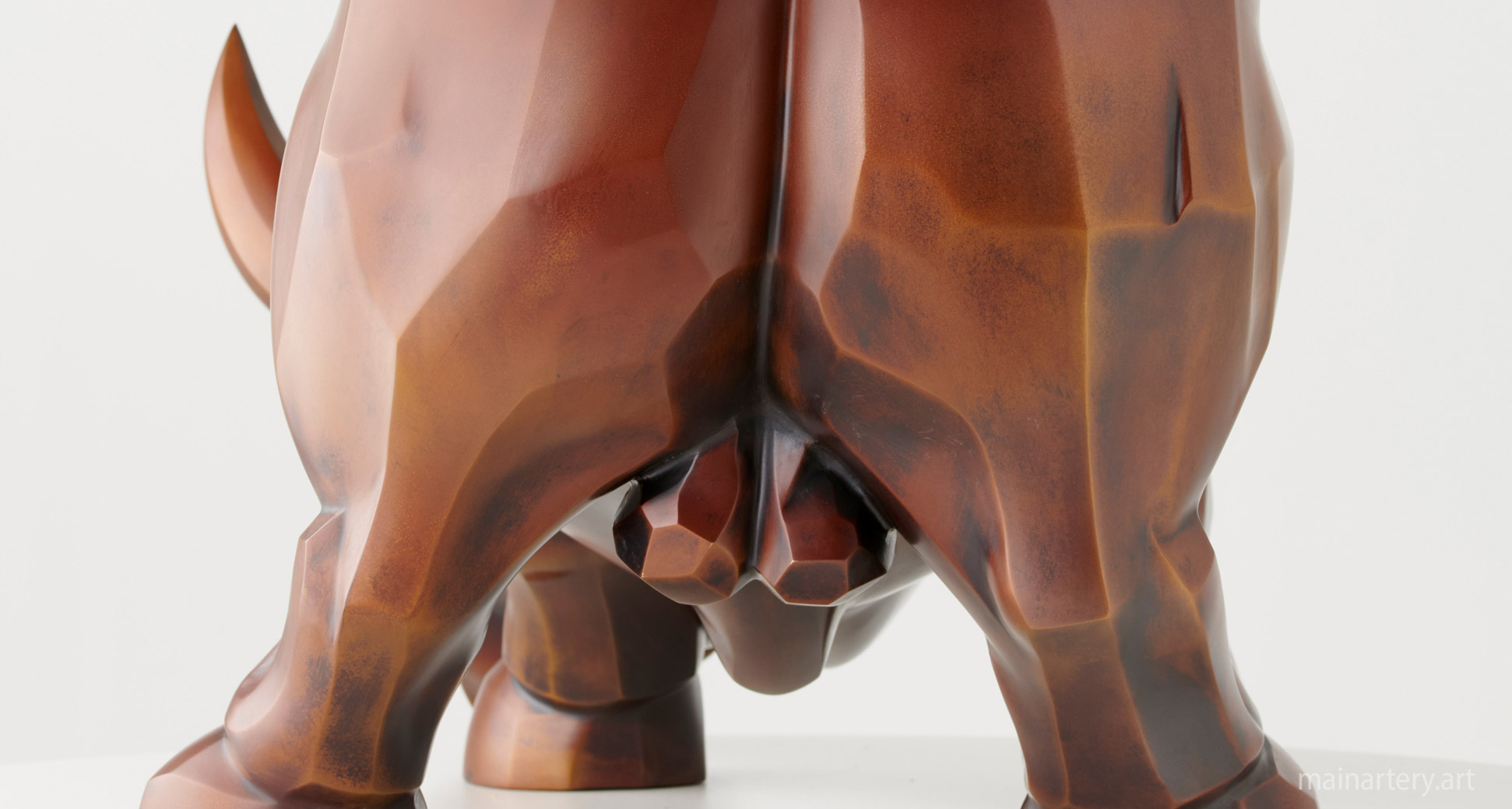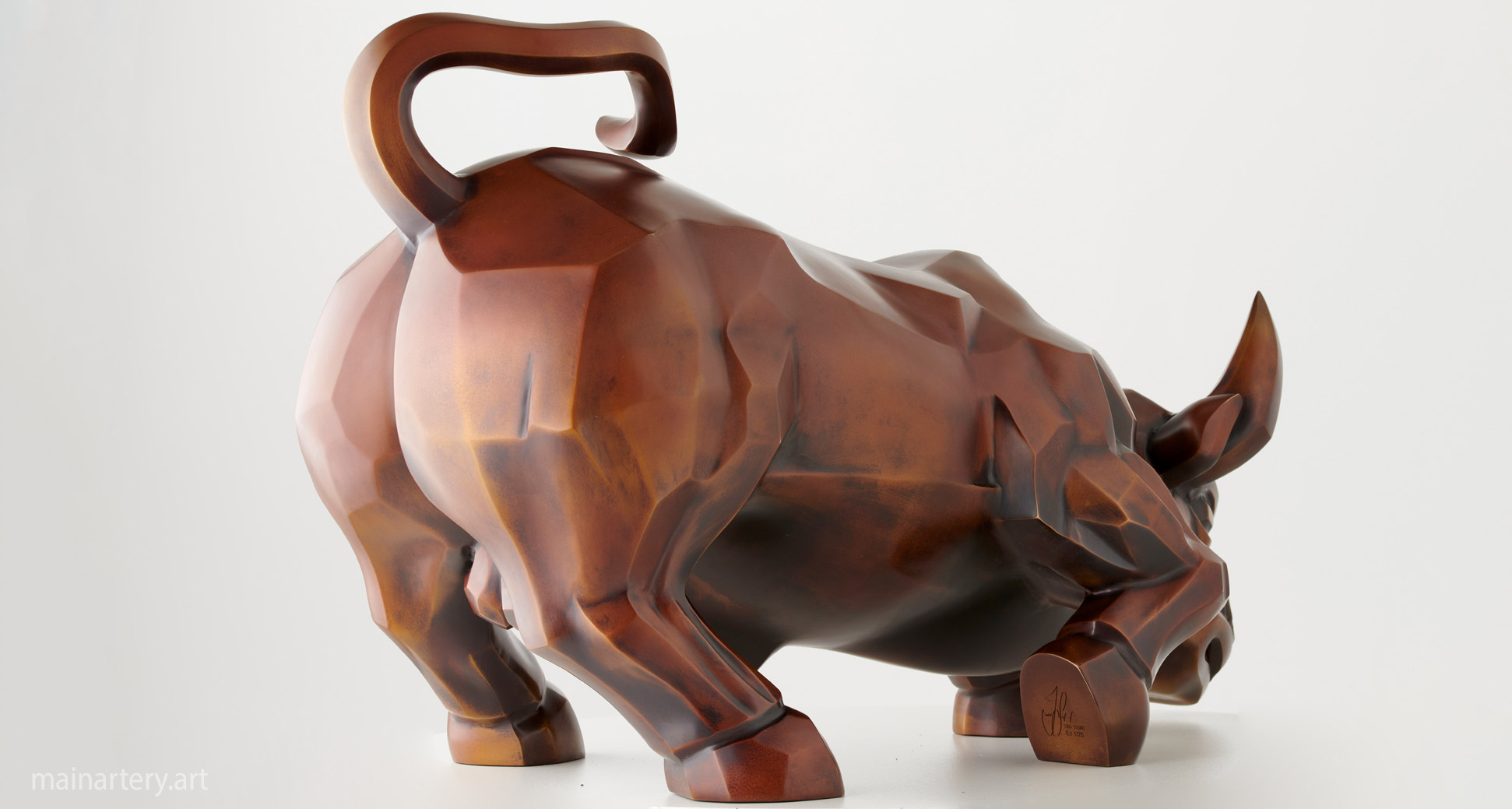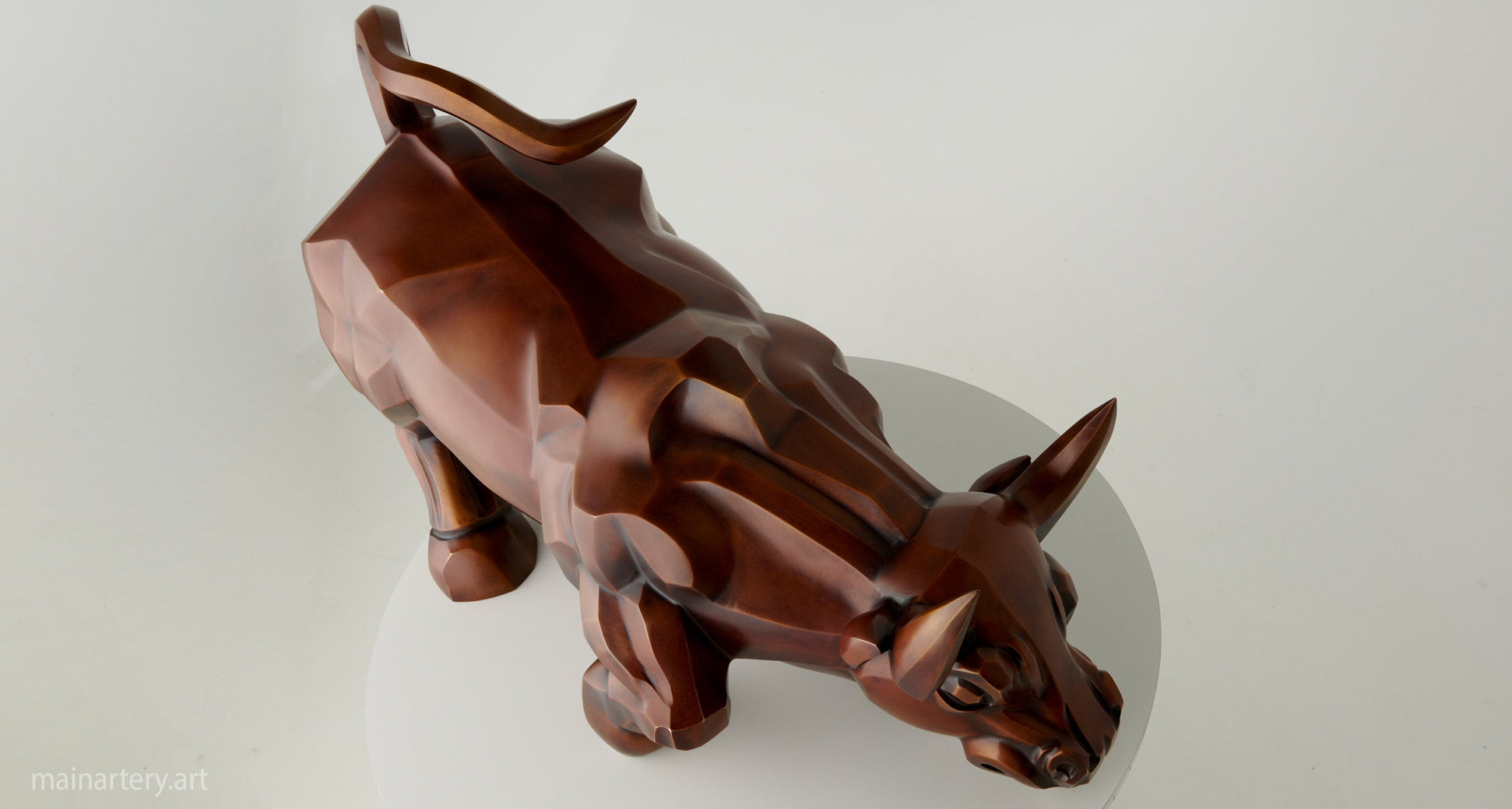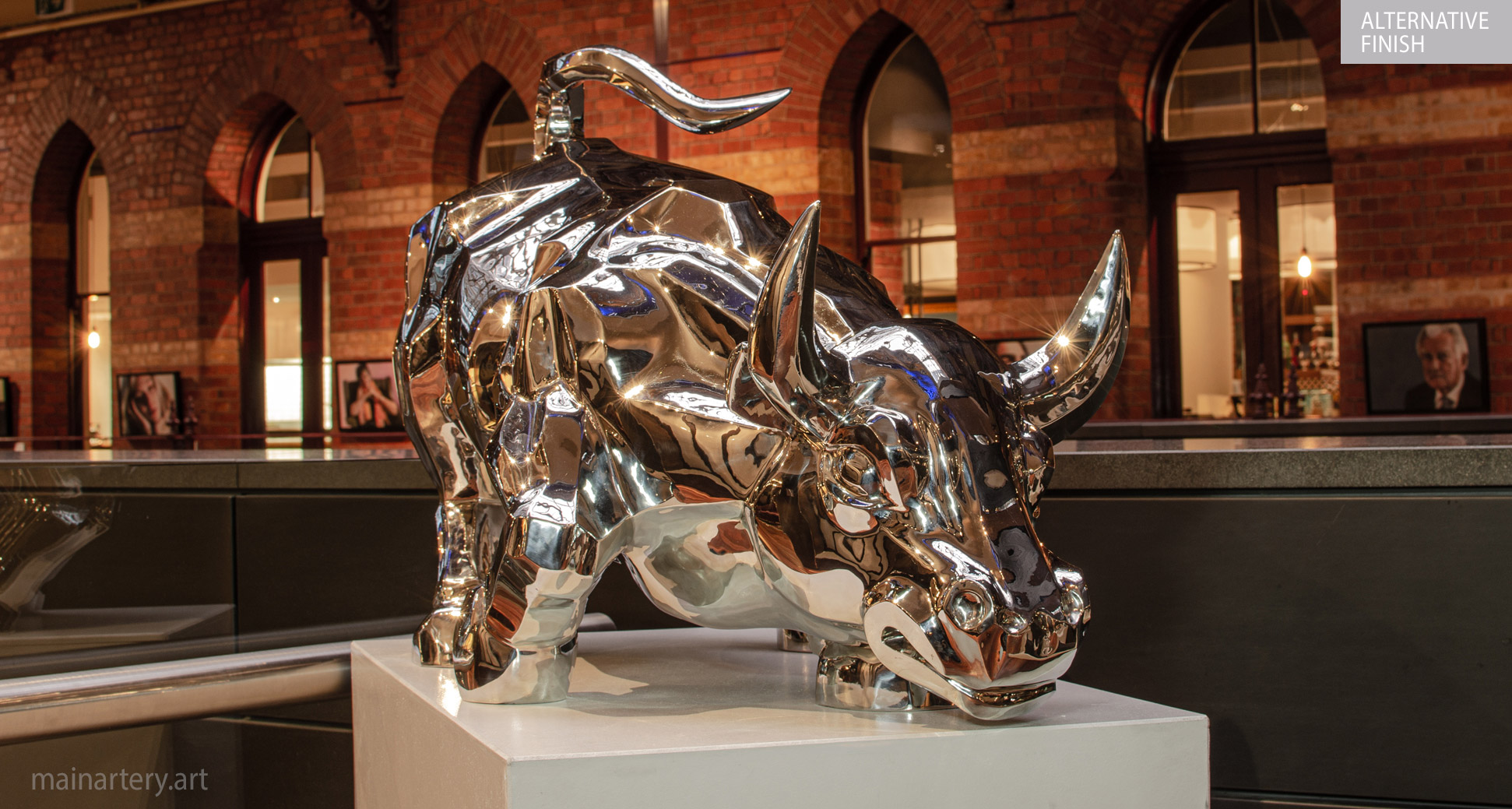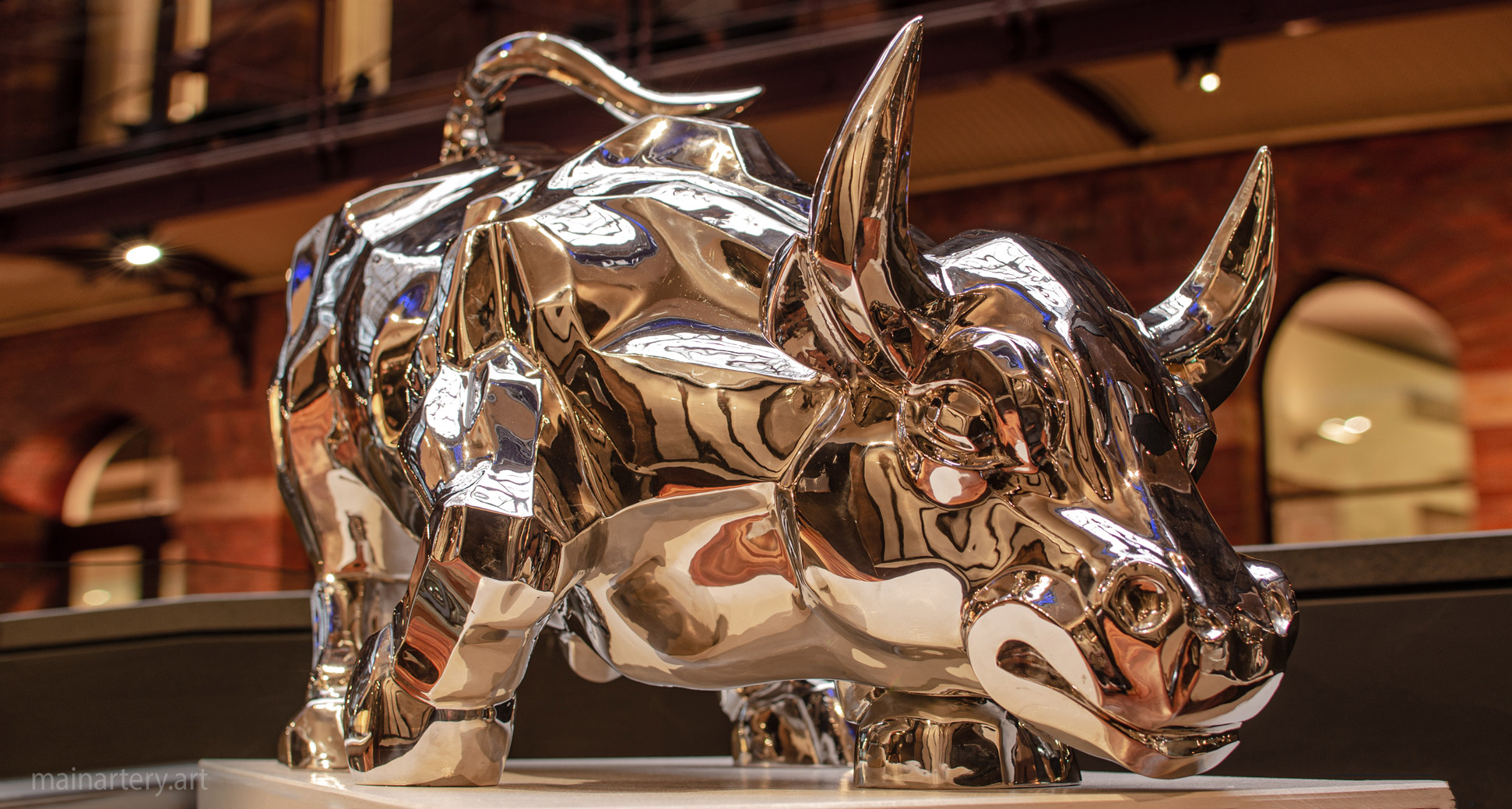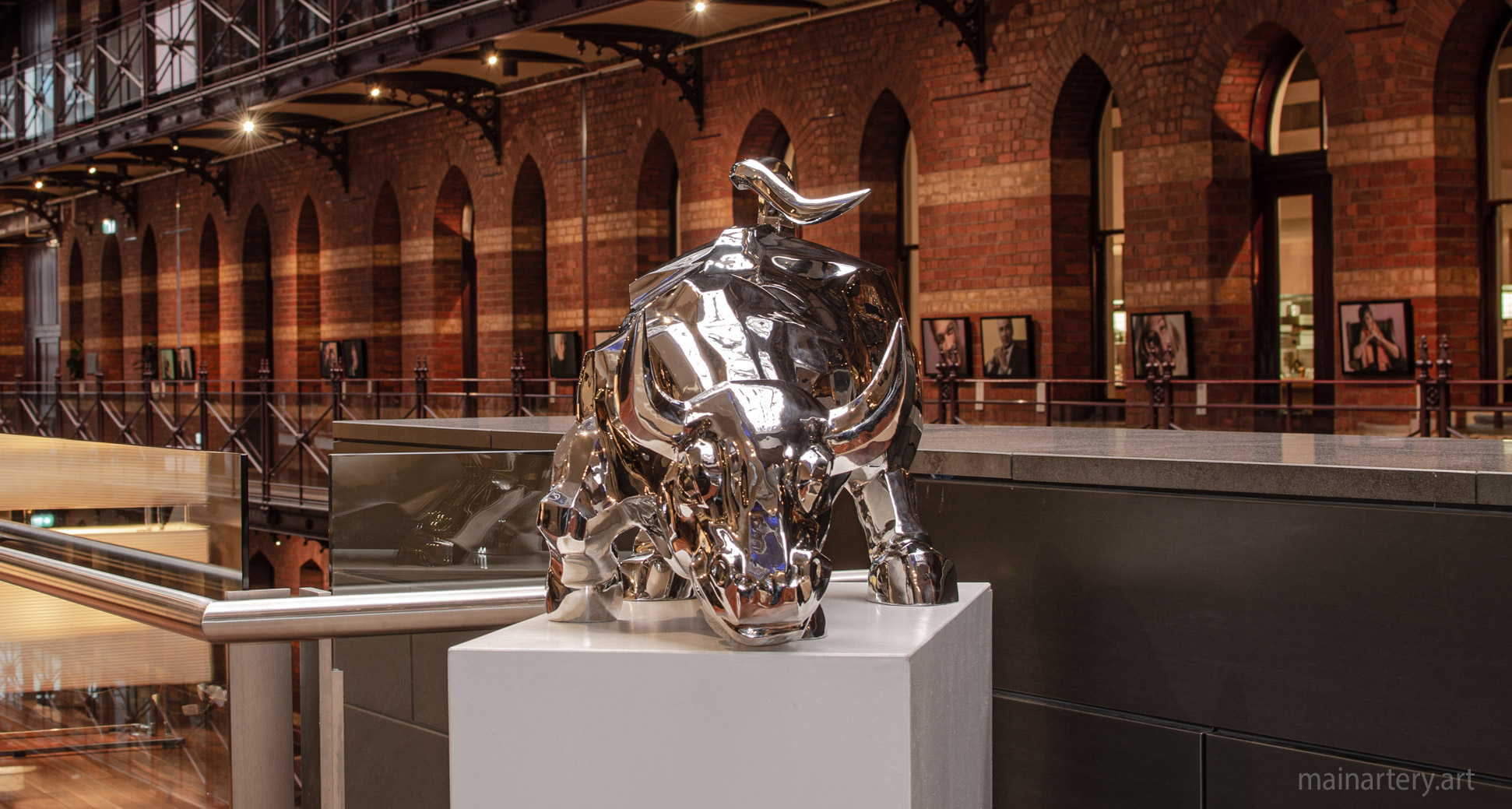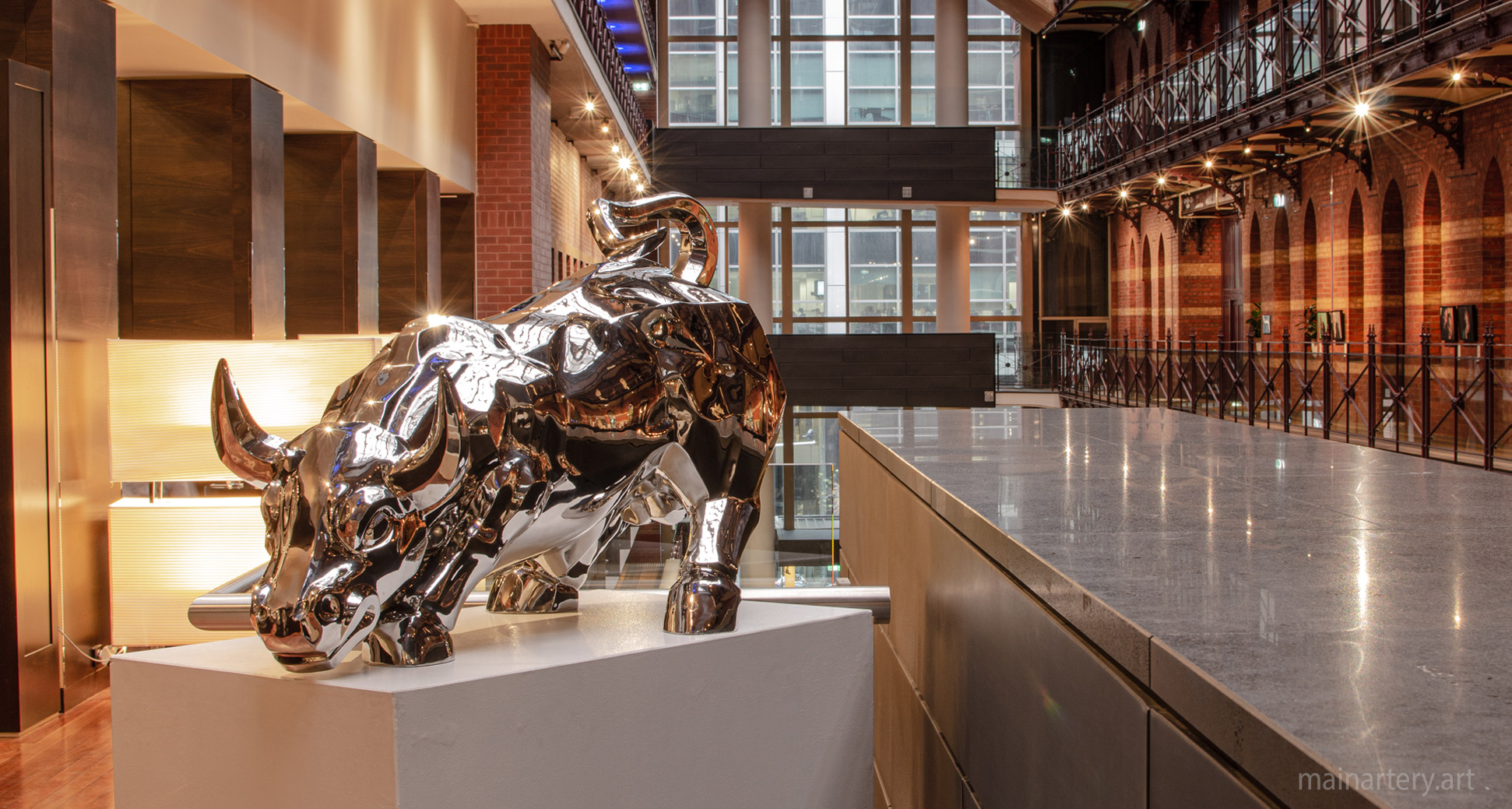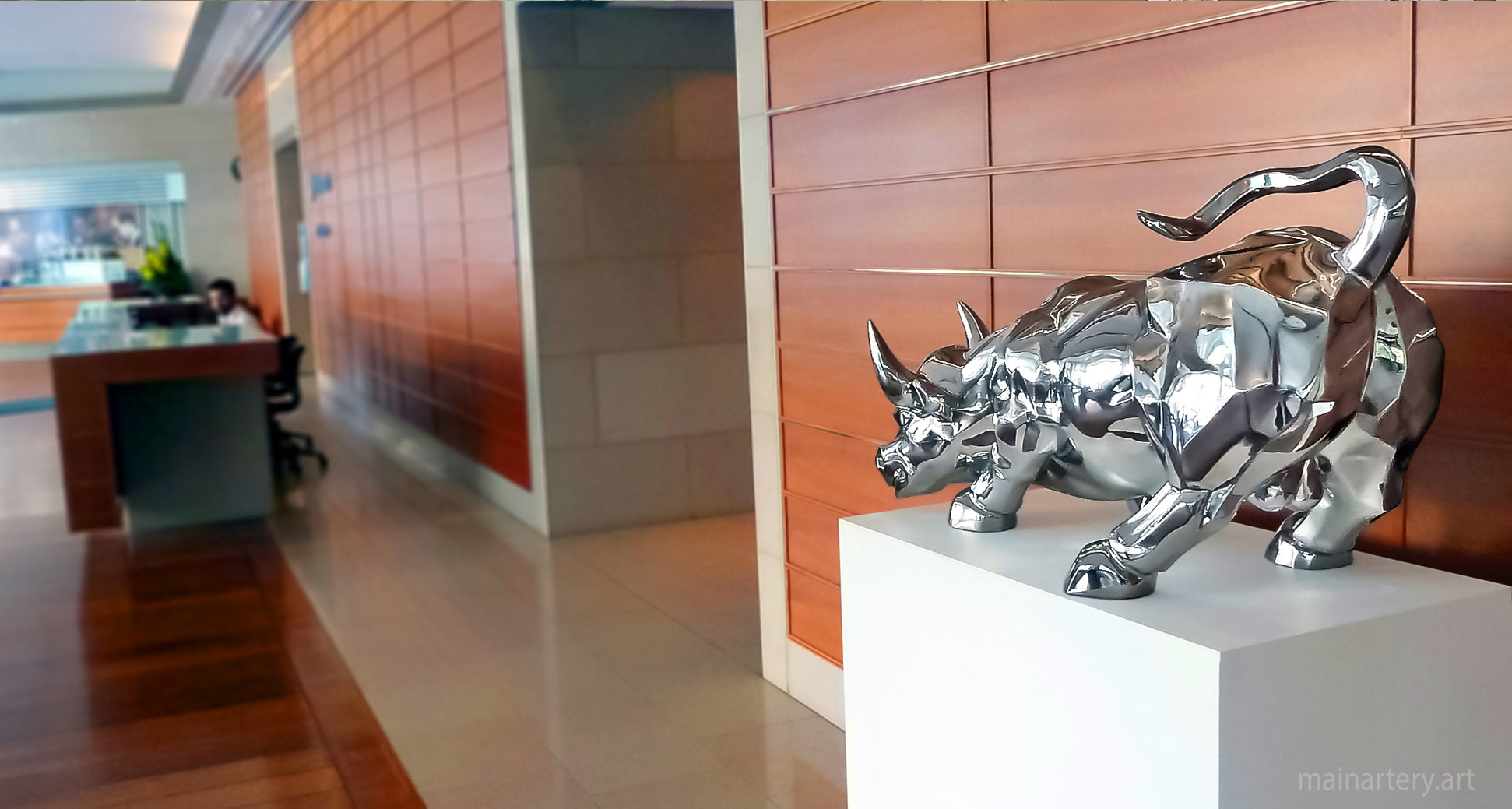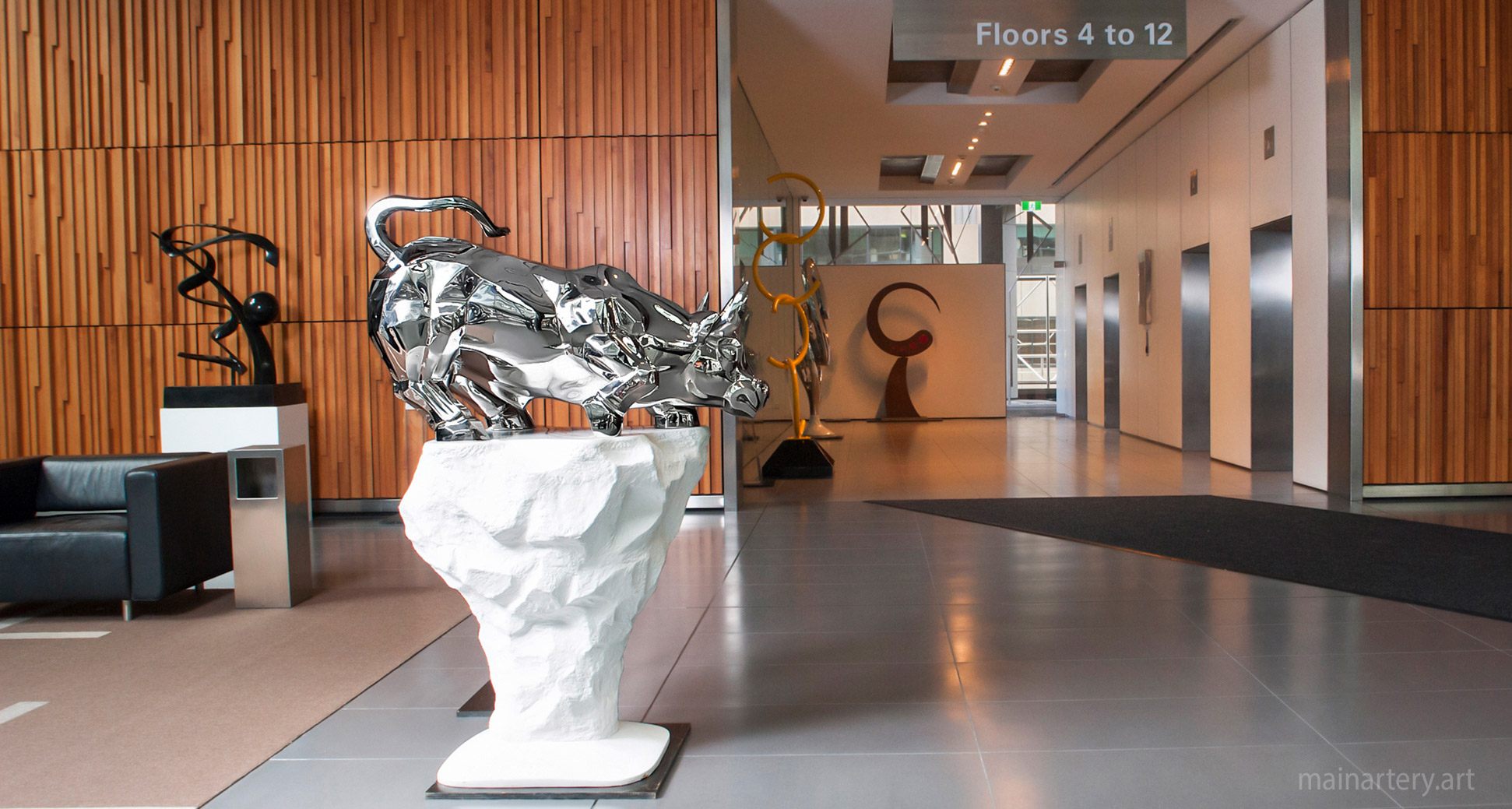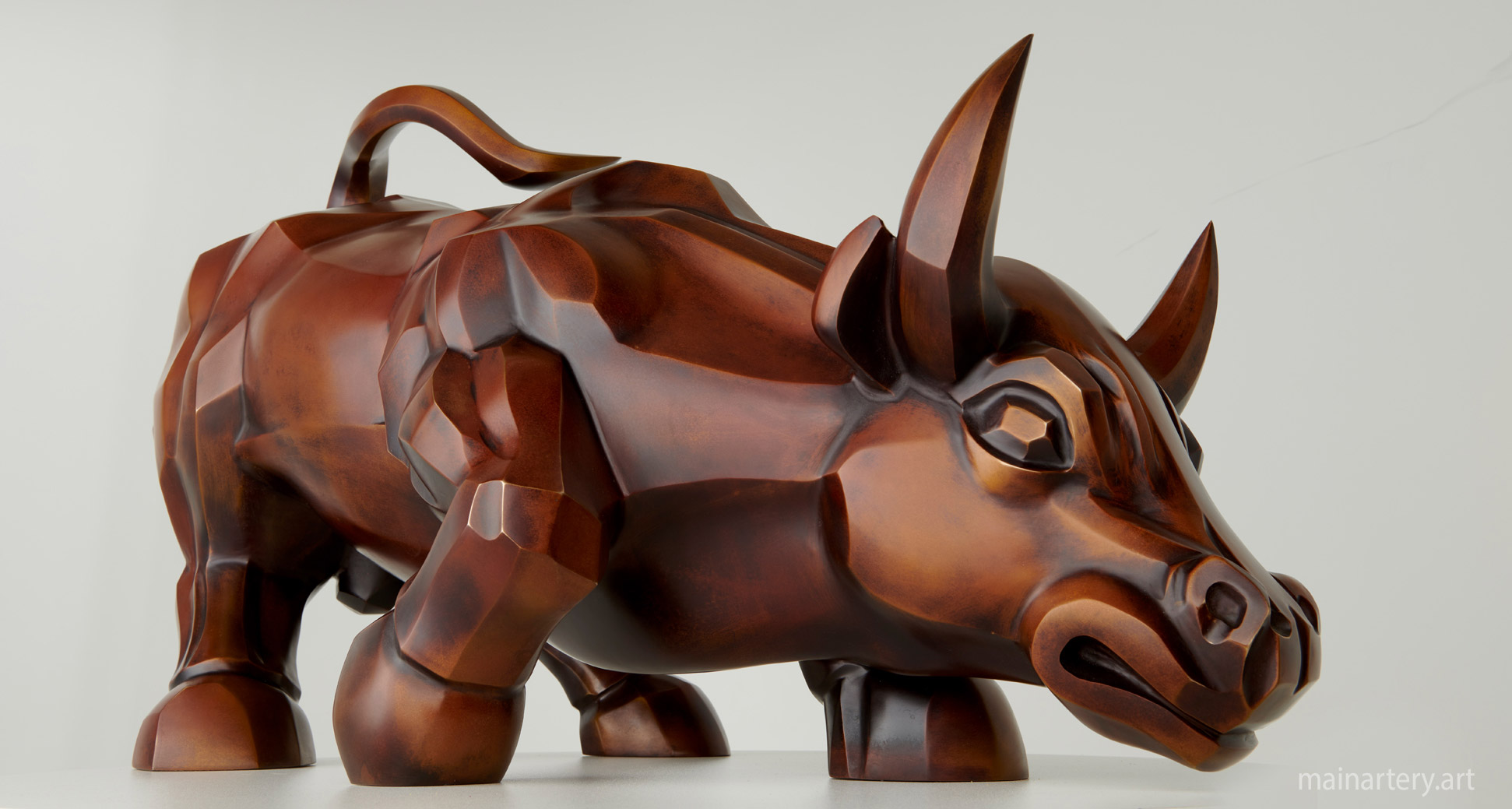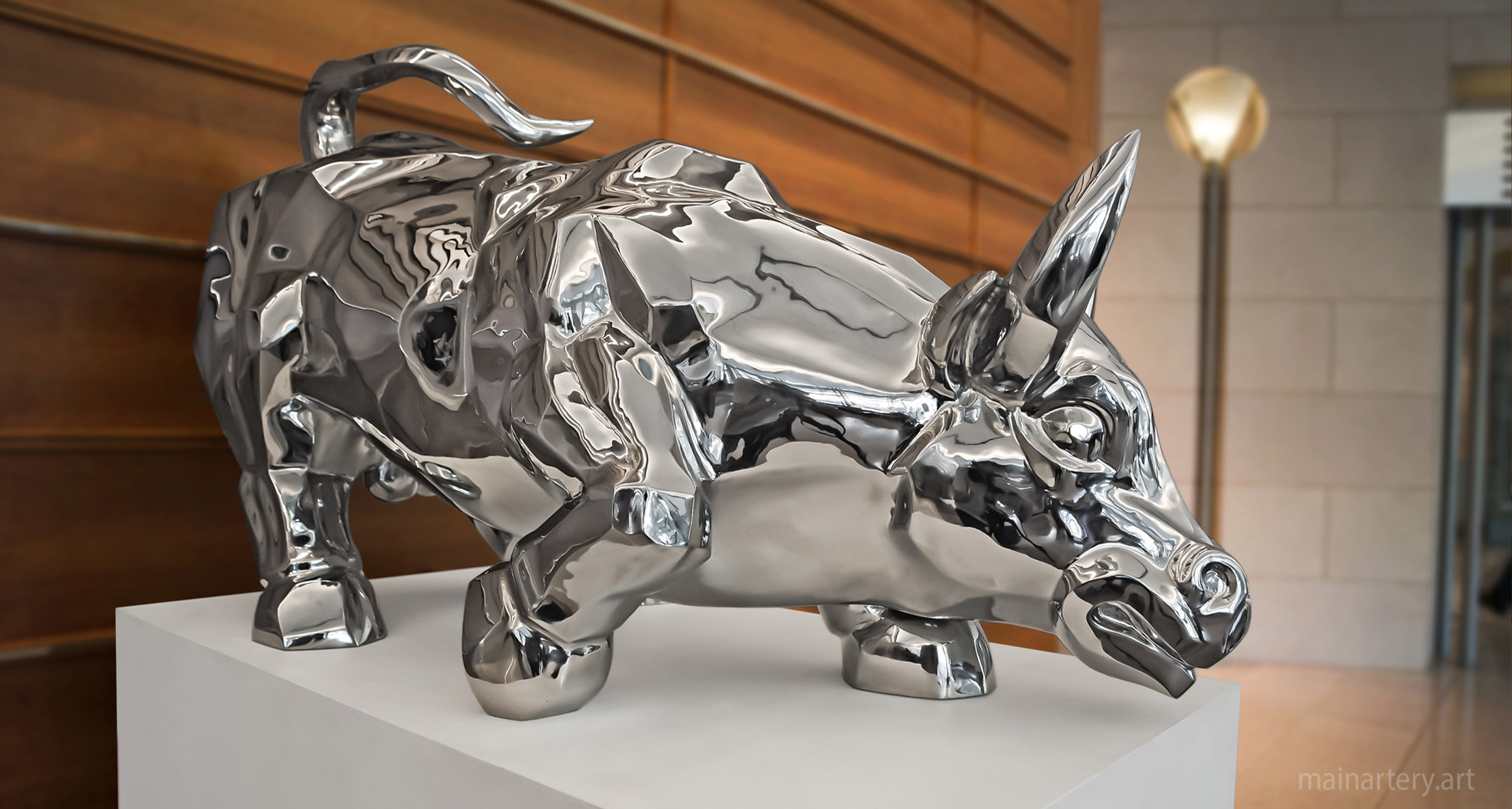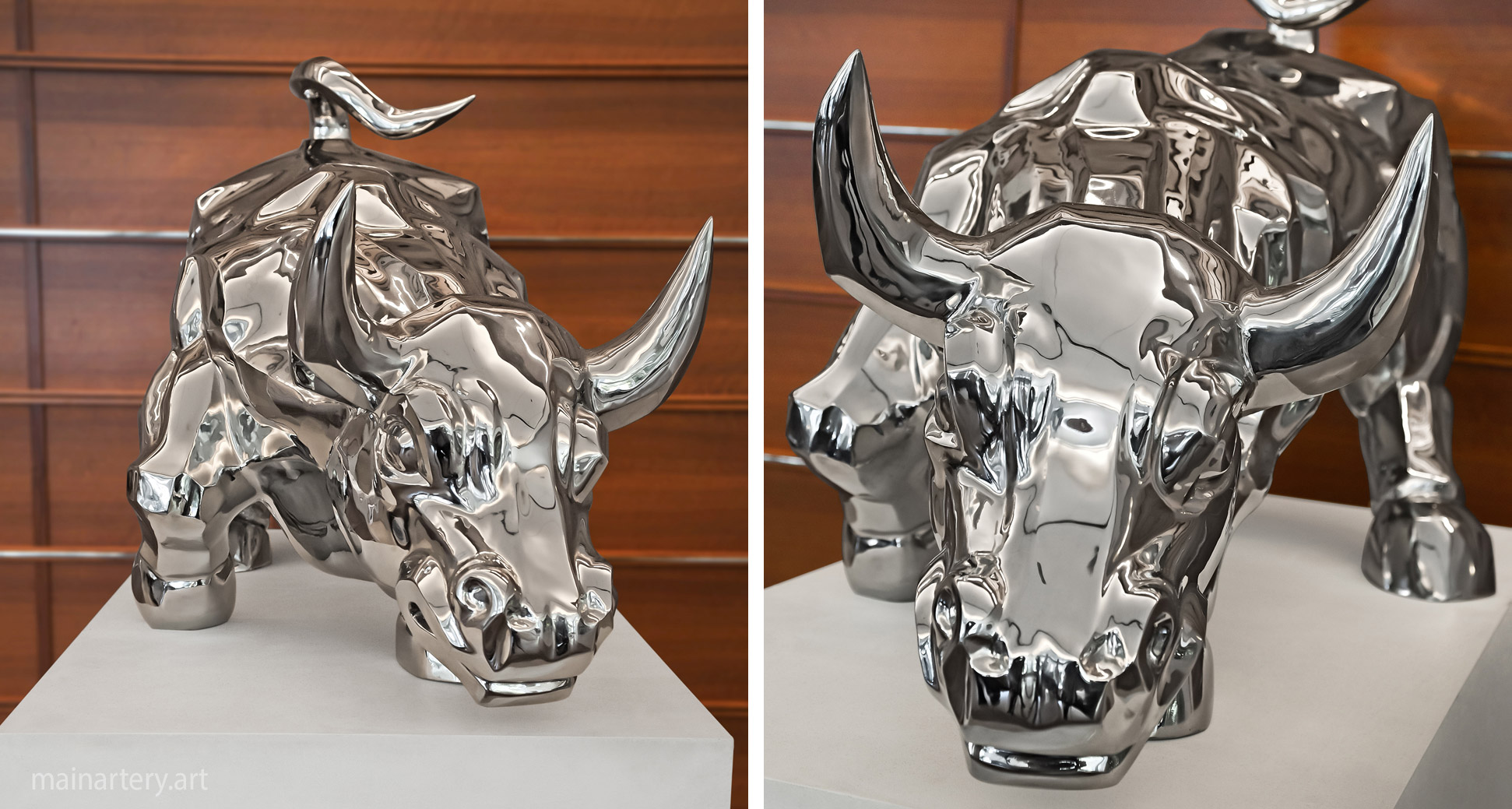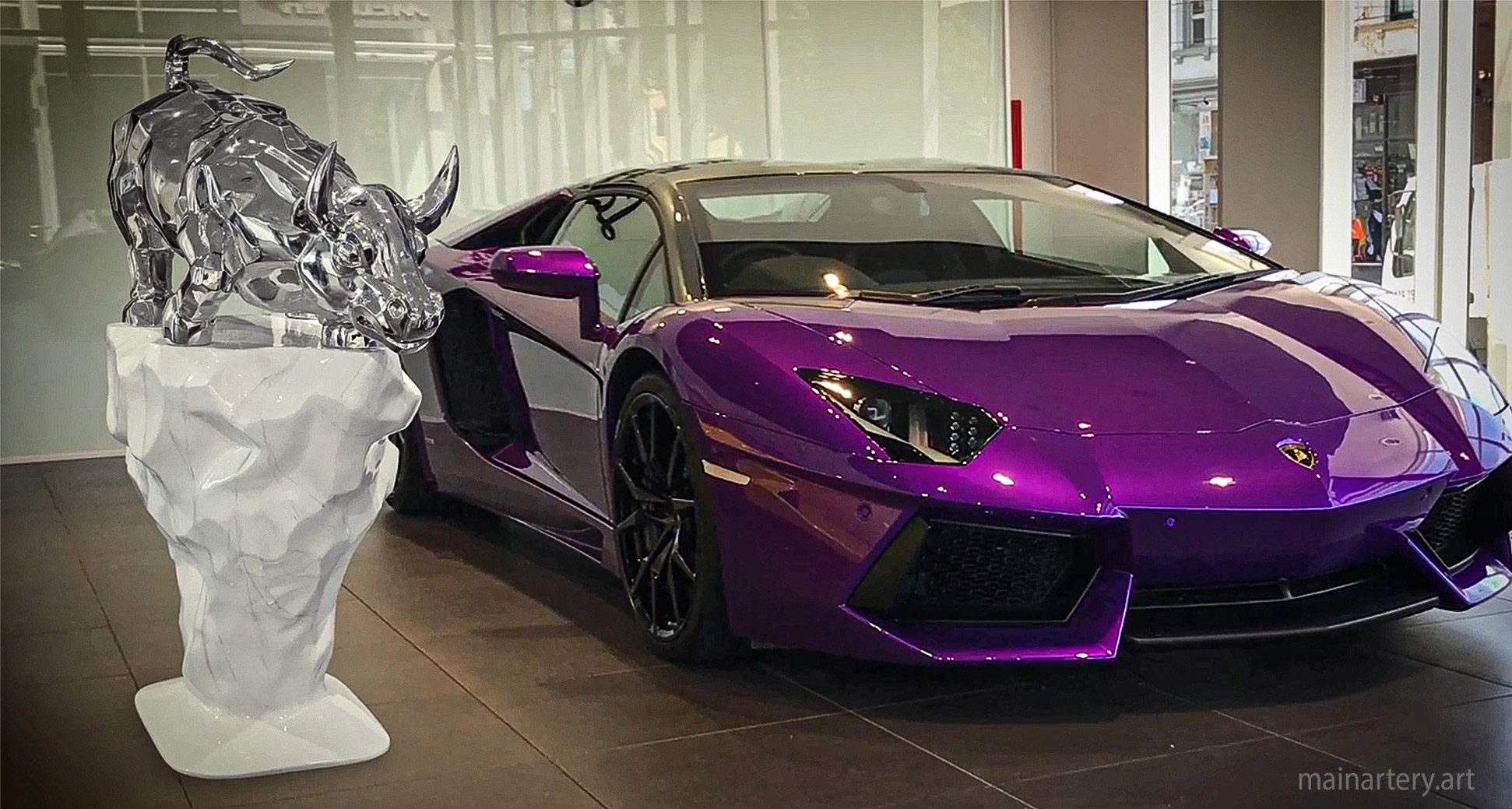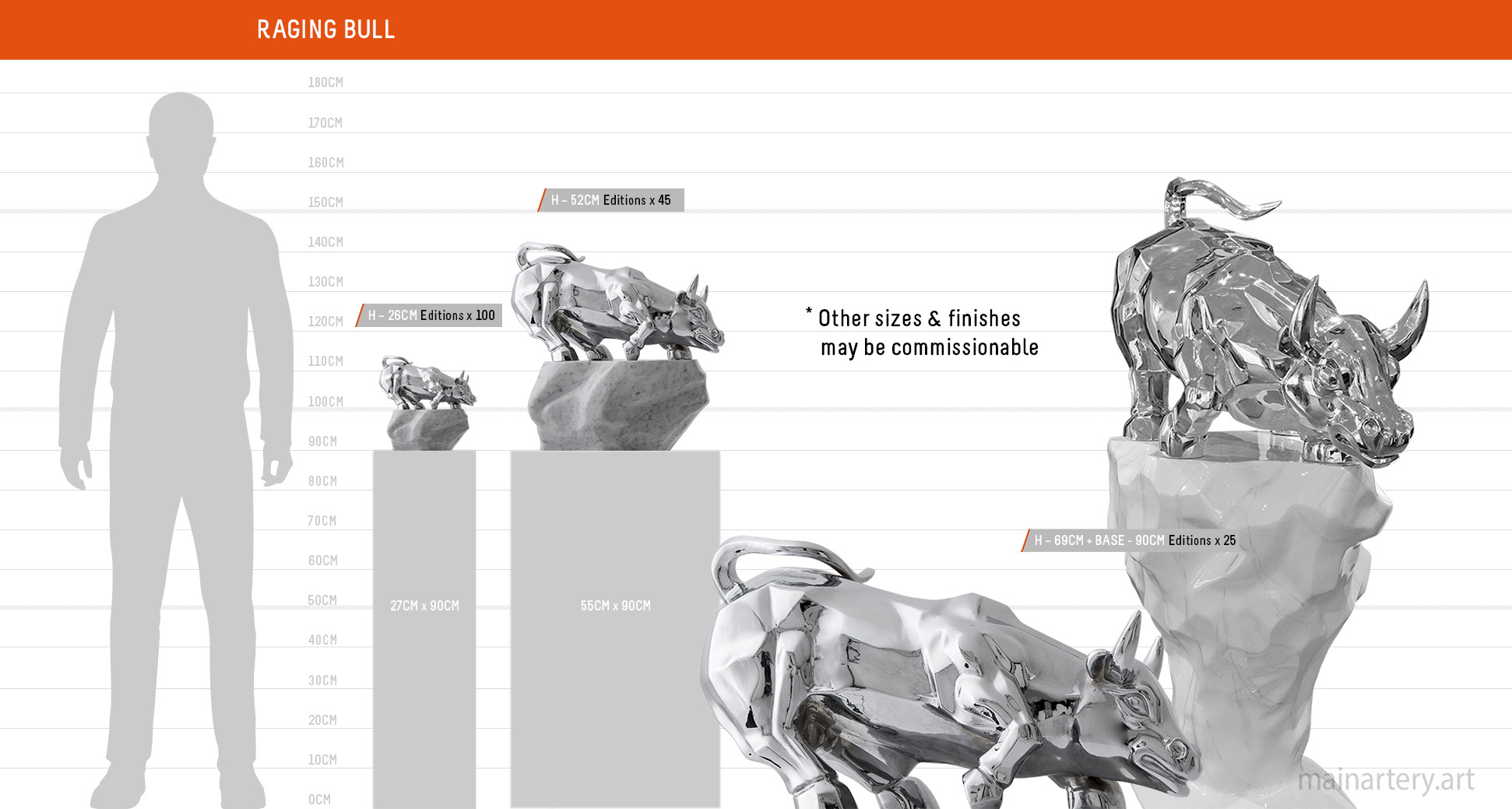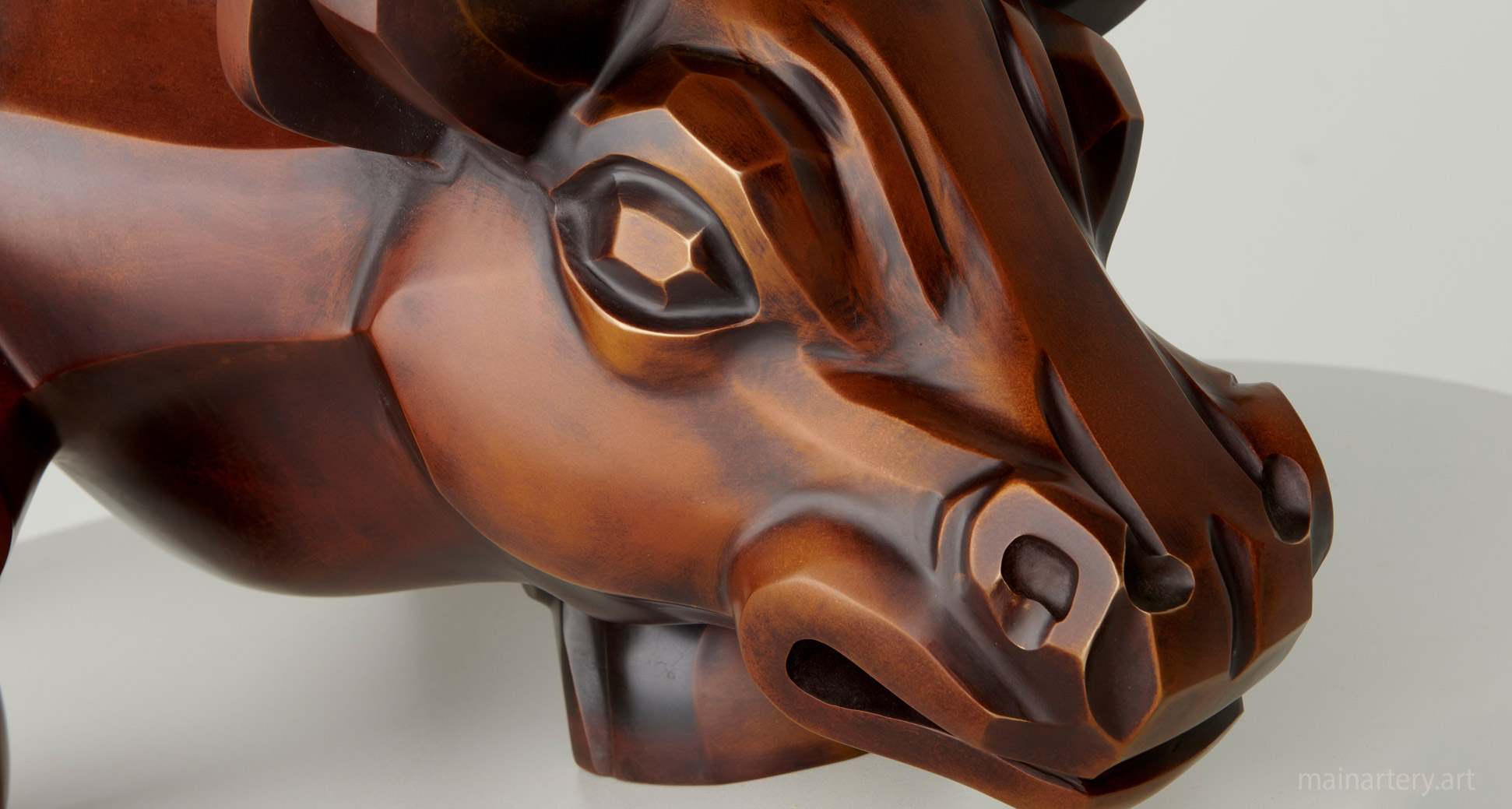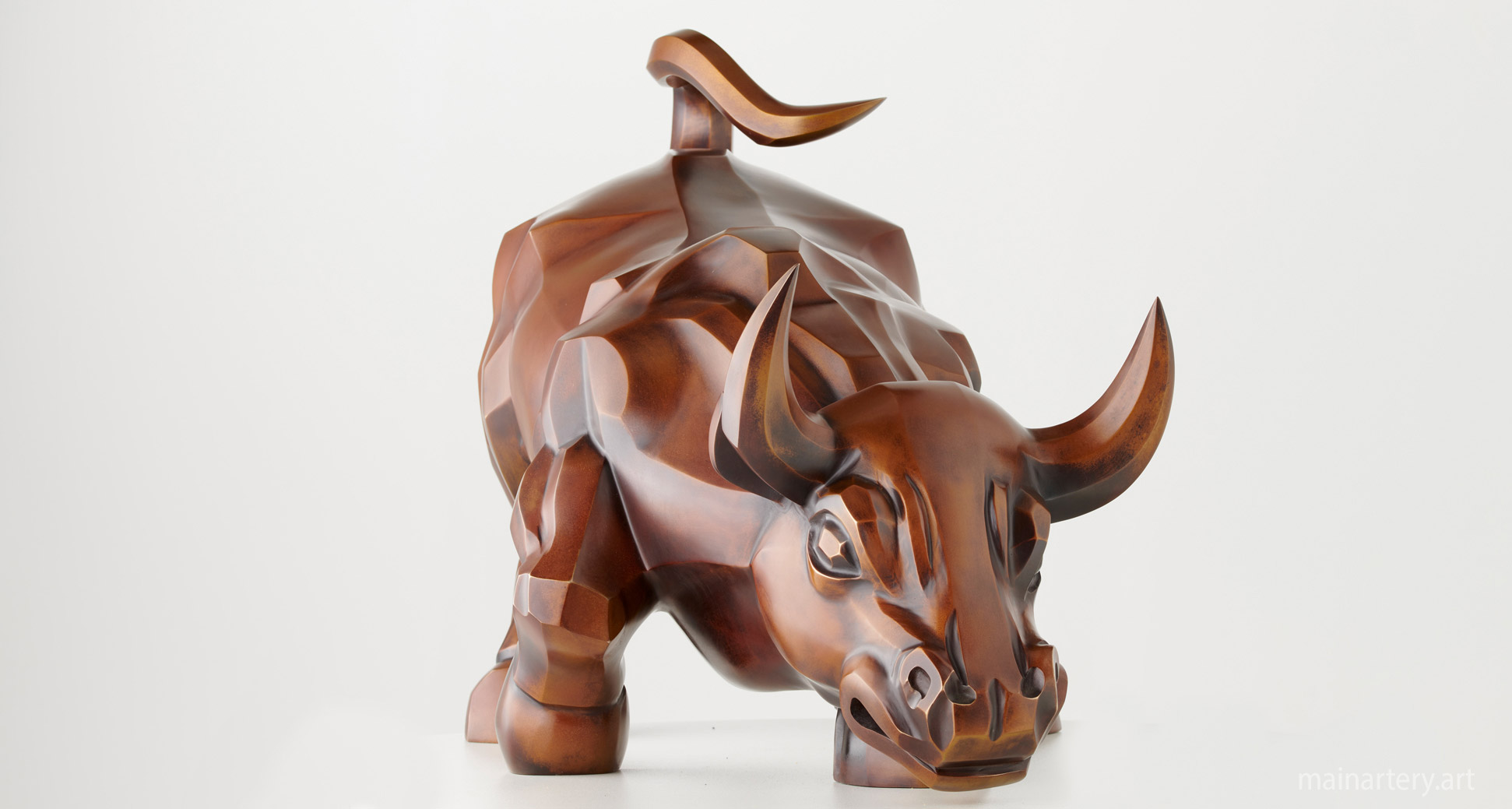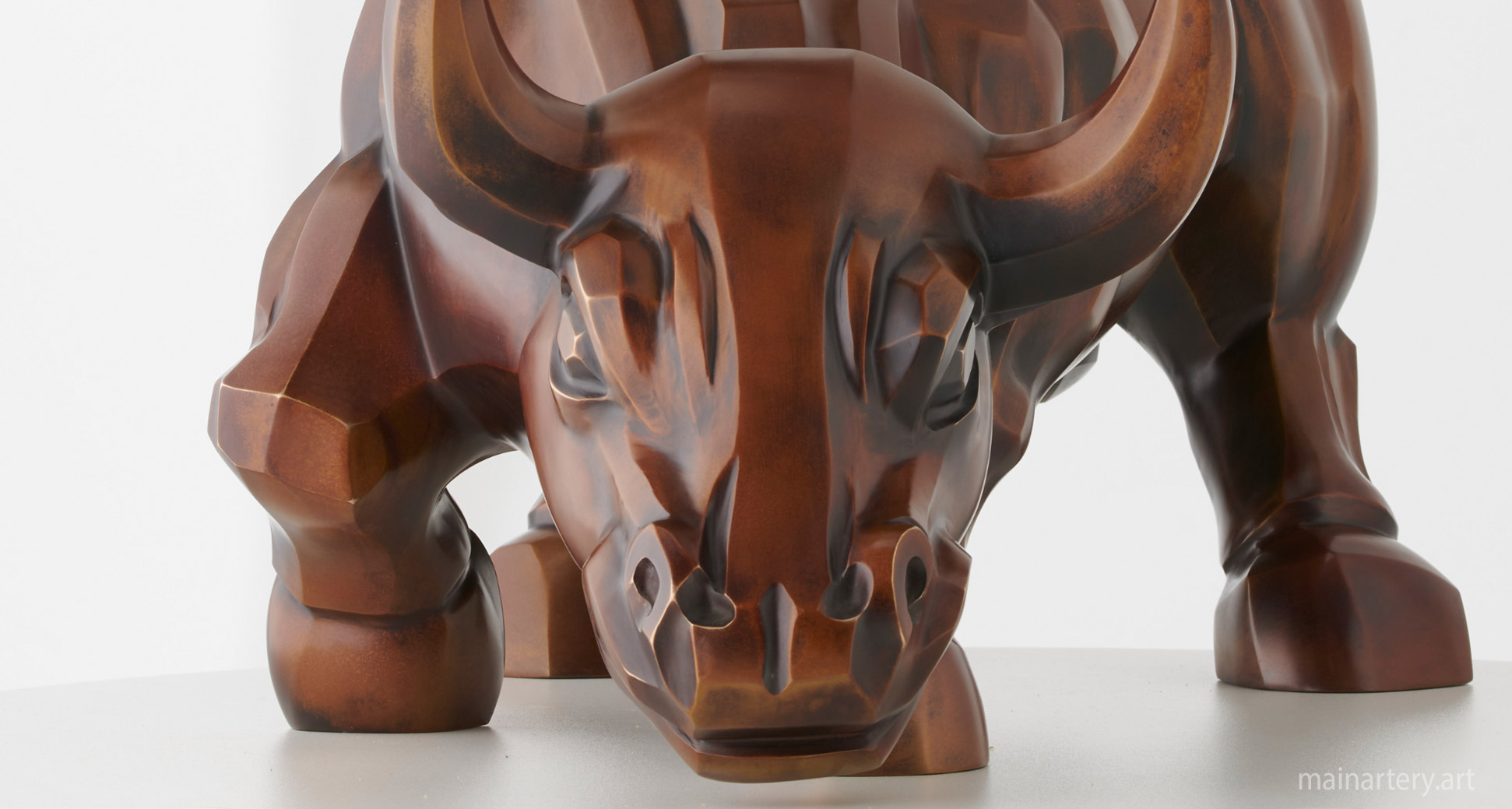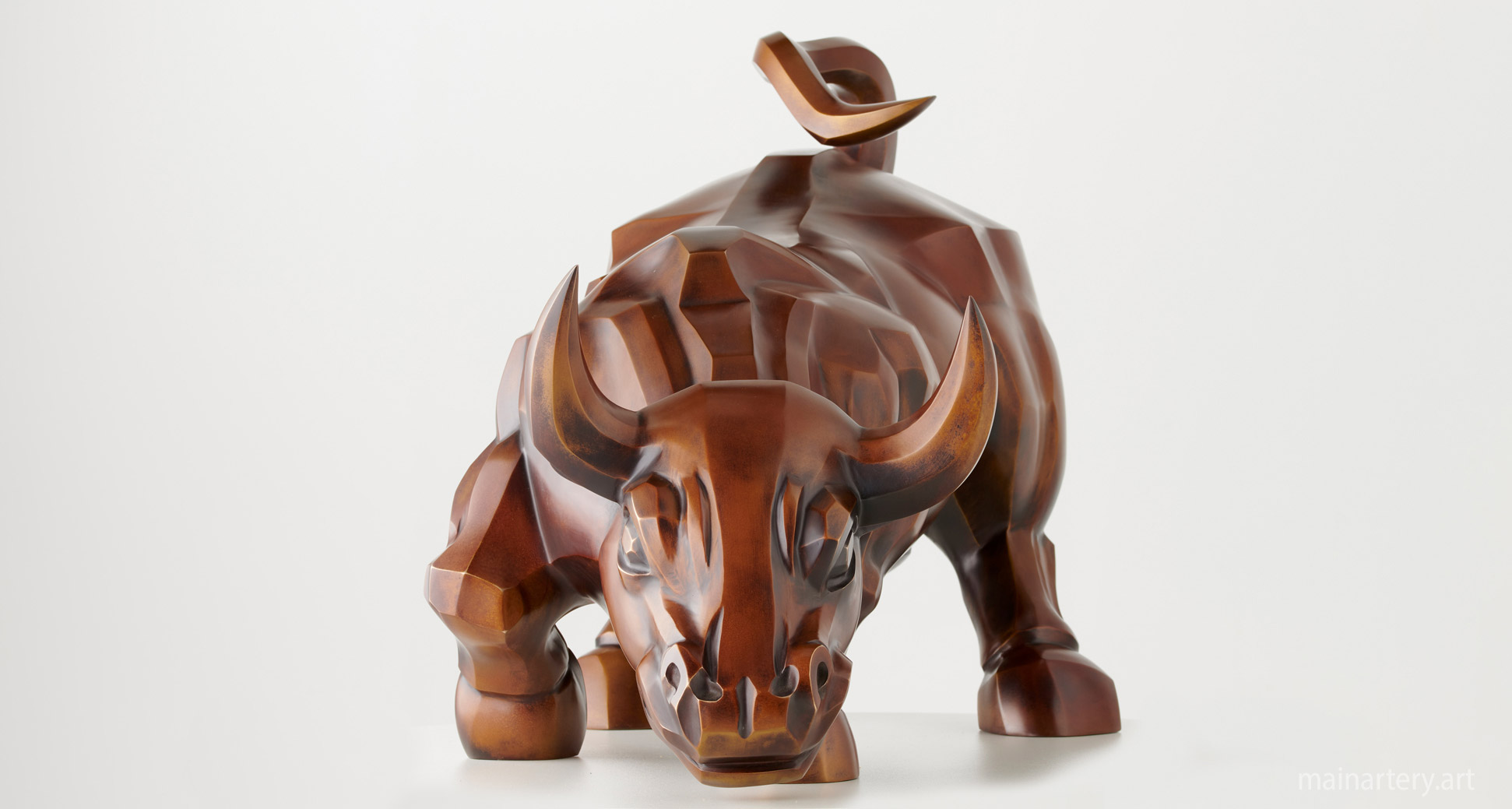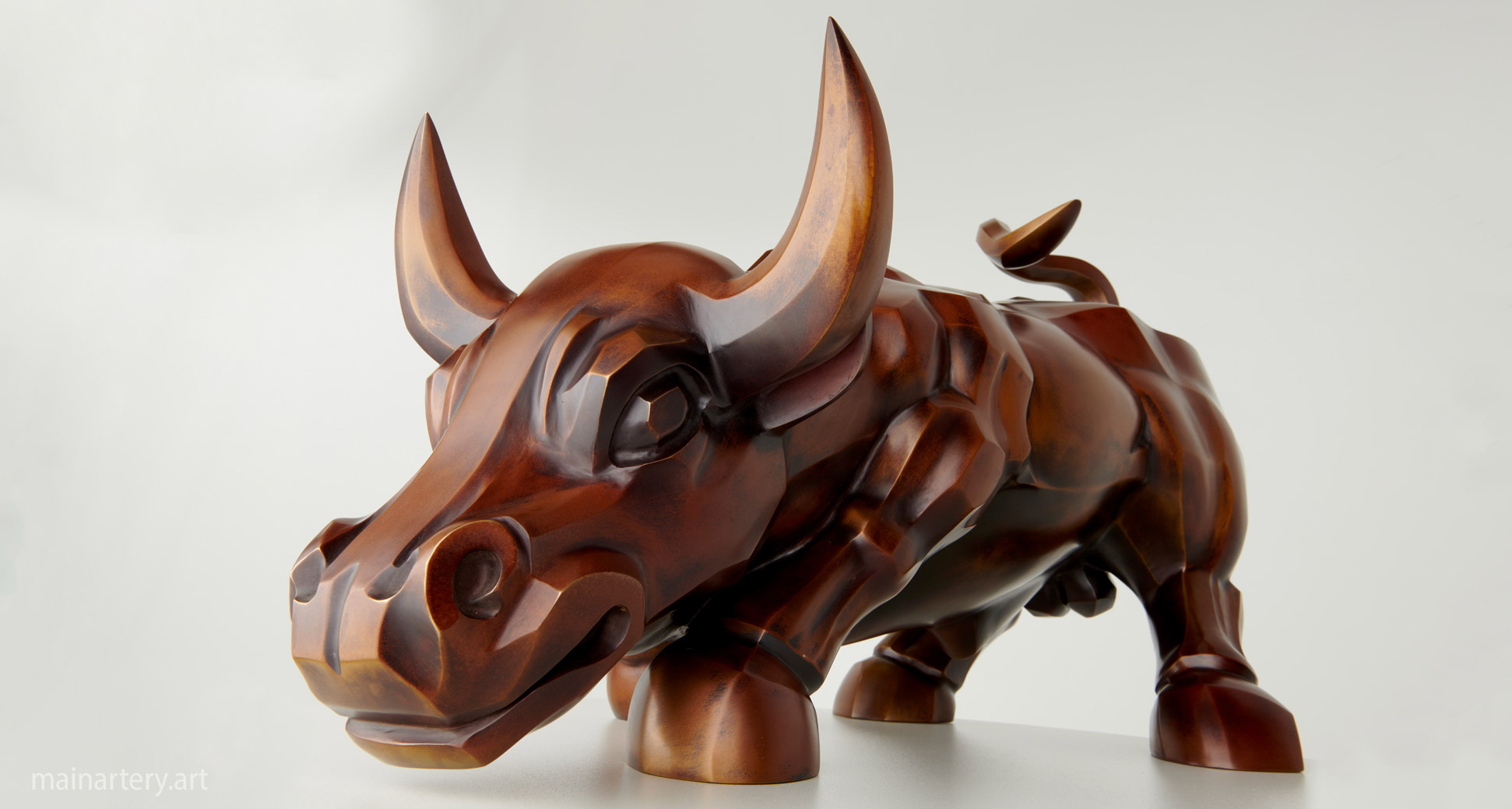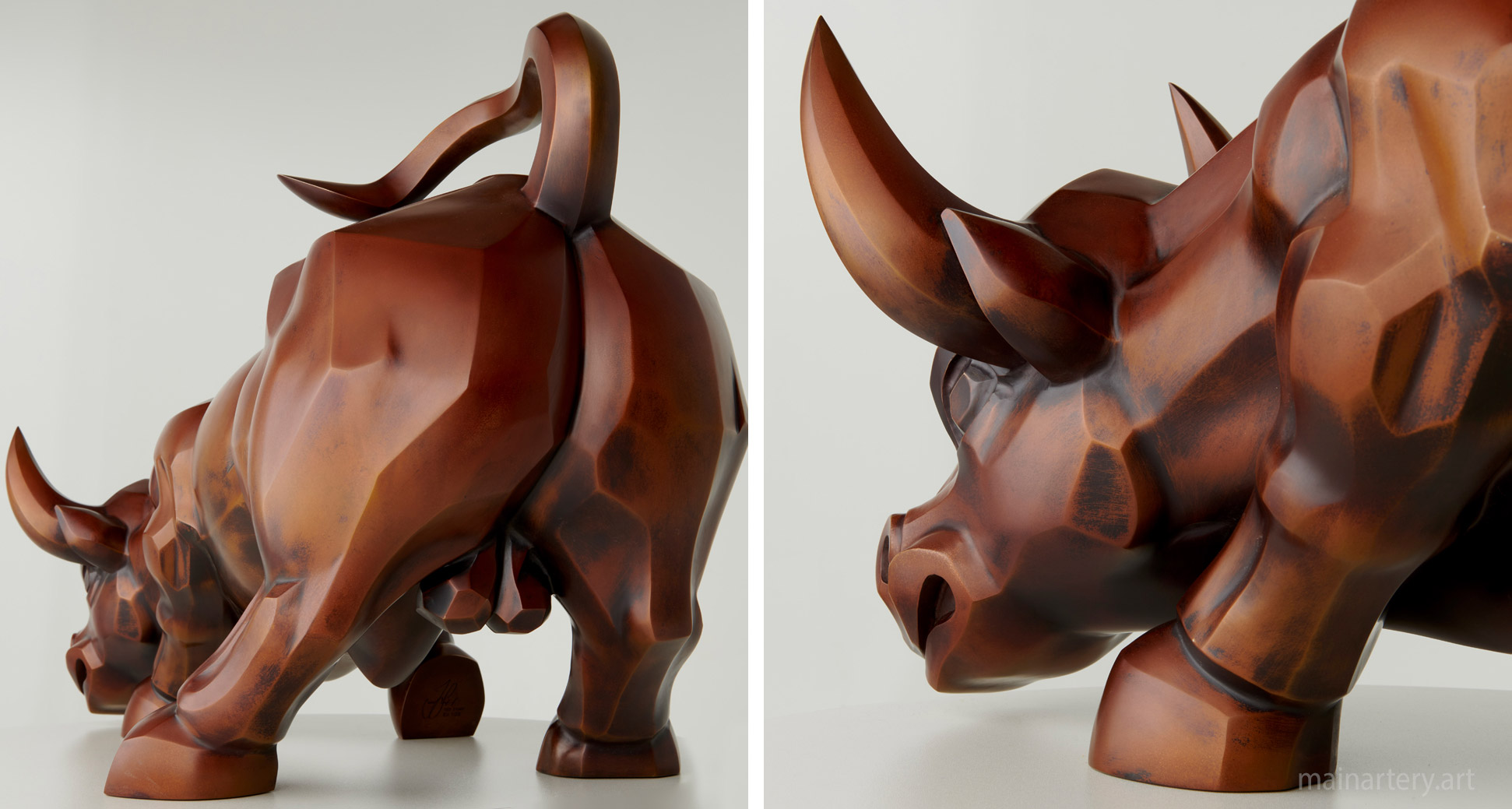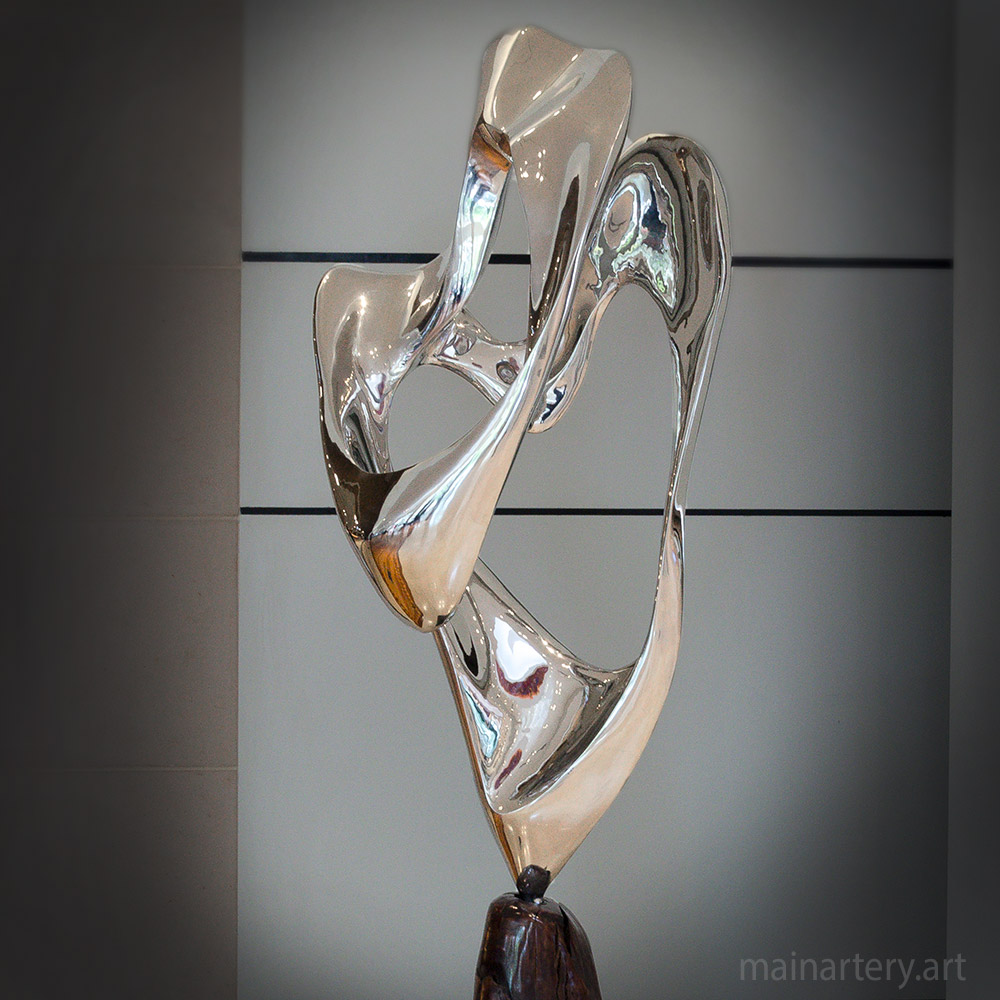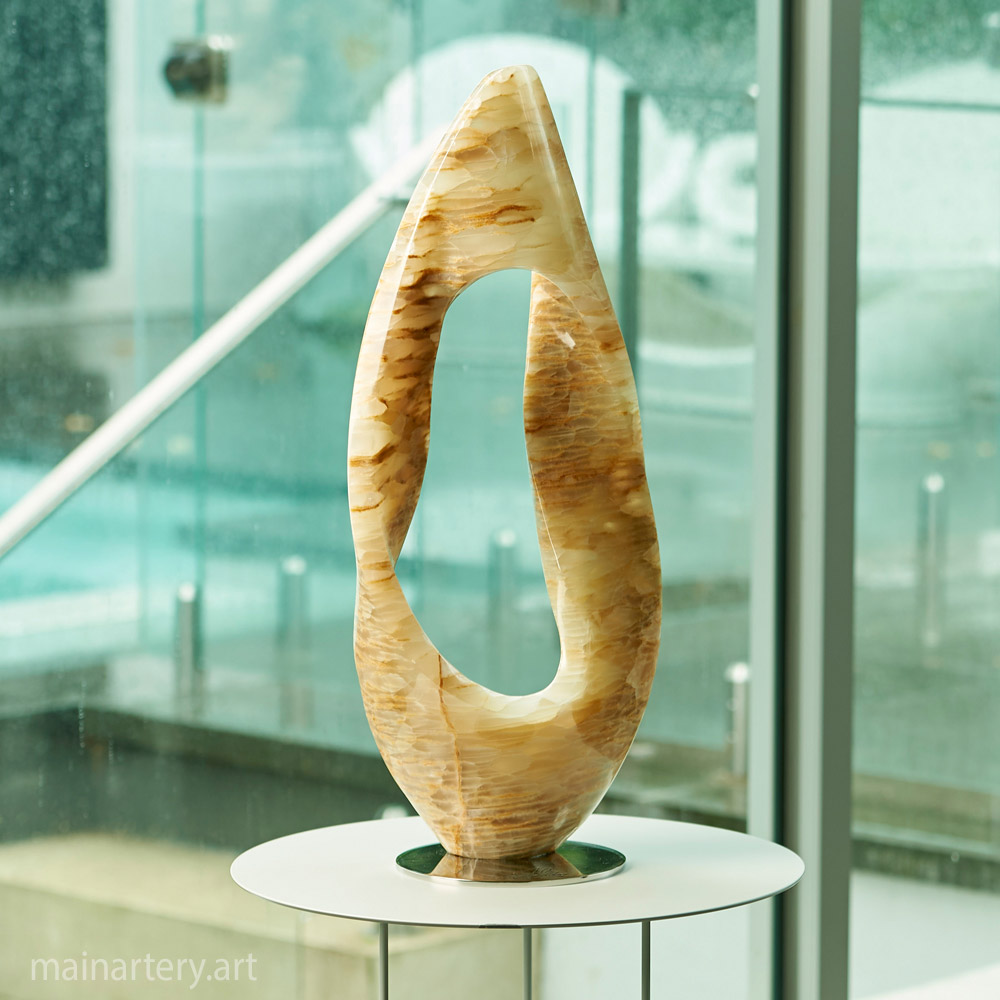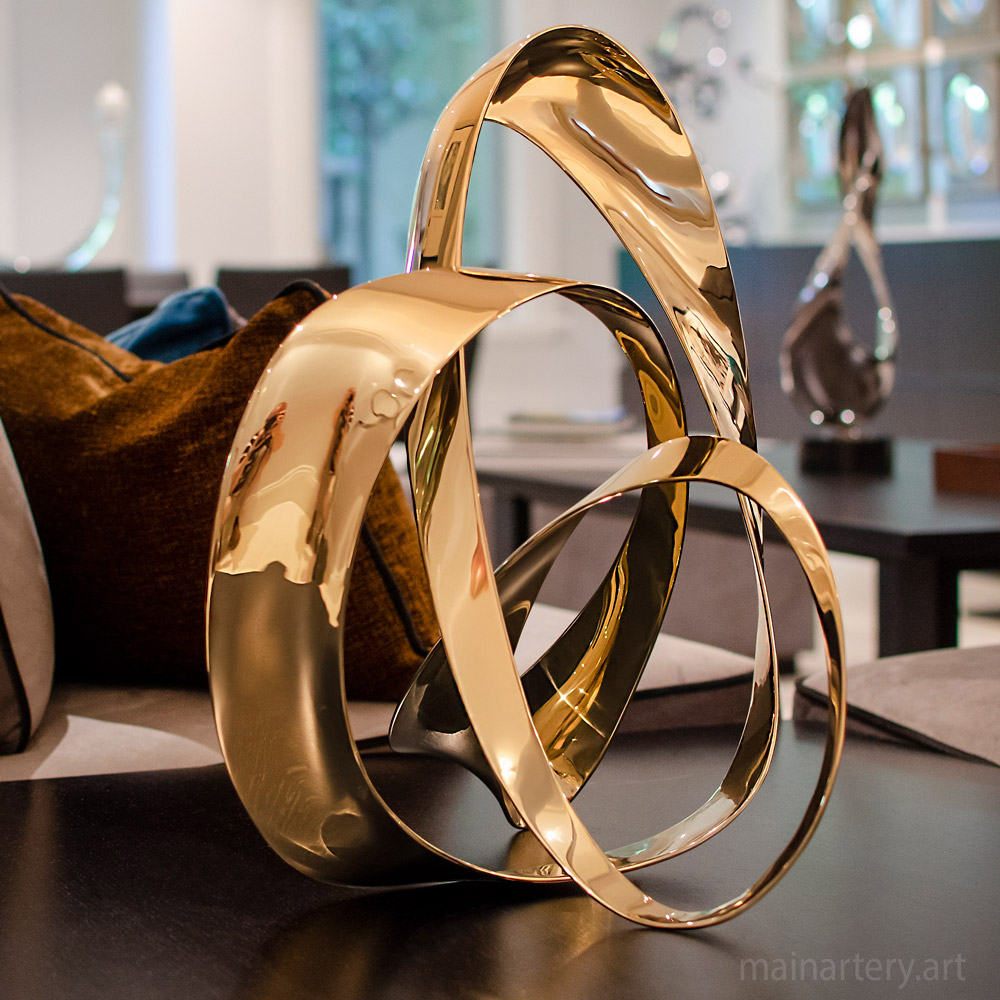Description
Inspired by Arturo Di Modica’s ‘Charging Bull’, Stuart’s ‘Raging Bull’ is a provocative commentary on the Australian stock market’s evolution since Occupy Wall Street. Its posture – aggressive and ready to charge, with furrowed brows and forward-facing horns – symbolizes either the relentless forces of the market or the authority of the elite. This sculpture diverges from Di Modica’s design through its use of cubist techniques, creating a reflective chrome surface where viewers confront their own reflections. ‘Raging Bull’ stands as a multifaceted symbol, blurring the lines between economic statement and social critique for today’s digital world.
Large Raging Bull—A Forceful Reflection of Australian Economic Turbulence
Inspired by Arturo Di Modica’s iconic “Charging Bull,” Stuart’s “Raging Bull” stands as a dynamic commentary on Australian market forces in the wake of global financial upheavals like Occupy Wall Street. Towering with powerful posture, this charging bull sculpture radiates aggression, confronting onlookers with lowered head and forward-thrust horns. From each angle, it poses questions about wealth, authority, and the relentless churn of economic cycles.
Market’s Fury—Symbolism of Power and Fragmentation
The bull’s posture captures an uneasy balance between raw energy and poised command. With furrowed brows and menacing horns, it evokes the unstoppable drive of the financial market—an unstoppable wave that might either spearhead growth or crush stability. Serving as a metaphor for Australia’s own stock market evolution, this raging bull inspiration bronze sculpture juxtaposes Di Modica’s iconic fluid lines with cubist techniques, breaking the bull’s form into reflective facets. Thus, it conveys the fragmentation of modern finance, a system frequently deemed unpredictable and fueled by digital-era innovations.
As one gazes at the bull’s reflective surfaces, they witness their own reflection intermingled with the beast’s ominous angles. This visual interplay forces a dialogue between personal identity and the broader market forces that shape our lives—are we complicit participants, mere observers, or critics of an ever-charging system? The bull’s size and stance hint that even those who passively stand by cannot evade the reverberations of global finance.
A Contemporary Critique—Blurring Economic and Social Narratives
In departing from Di Modica’s original design, Stuart’s version weaves social commentary into an already potent icon. Where the original “Charging Bull” radiated optimism and a fighting spirit for Wall Street, the cubist fragmentation of “Raging Bull” underscores a time of uncertainty. This raging bull bronze large statue recognizes how new technologies and social movements—like Occupy—confront entrenched power structures. Each cubist plane can represent a different stakeholder in the financial game: governments, corporations, individual investors, or entire communities caught in the crossfire of speculation.
Moreover, the piece refuses to be pinned down as purely celebratory or wholly critical. Its gleaming metal could easily symbolize opulence and success, yet the bull’s snarling expression reminds us that unrestrained markets can wreak havoc. This ambivalence resonates with many Australians who’ve witnessed cycles of booms and busts, from mining expansions to housing market fluctuations. Like the bull itself, these forces charge forward, sometimes forging opportunity, other times leaving devastation in their wake.
Ultimately, “Large Raging Bull” engages viewers in a contemplative dance: is this statue an emblem of unstoppable progress or a harbinger of looming danger? The dual influences of Di Modica’s classic piece and Stuart’s cubist reinterpretation highlight the collision between tradition and modernity. Positioned in a public square or a corporate foyer, the sculpture stands as a testament to the complexities of Australia’s financial landscape—where unstoppable ambition meets the sobering realities of volatility. Through its captivating presence, “Raging Bull” continues the conversation, reminding onlookers that behind every aggressive charge, there lies the question of who truly bears the cost.


